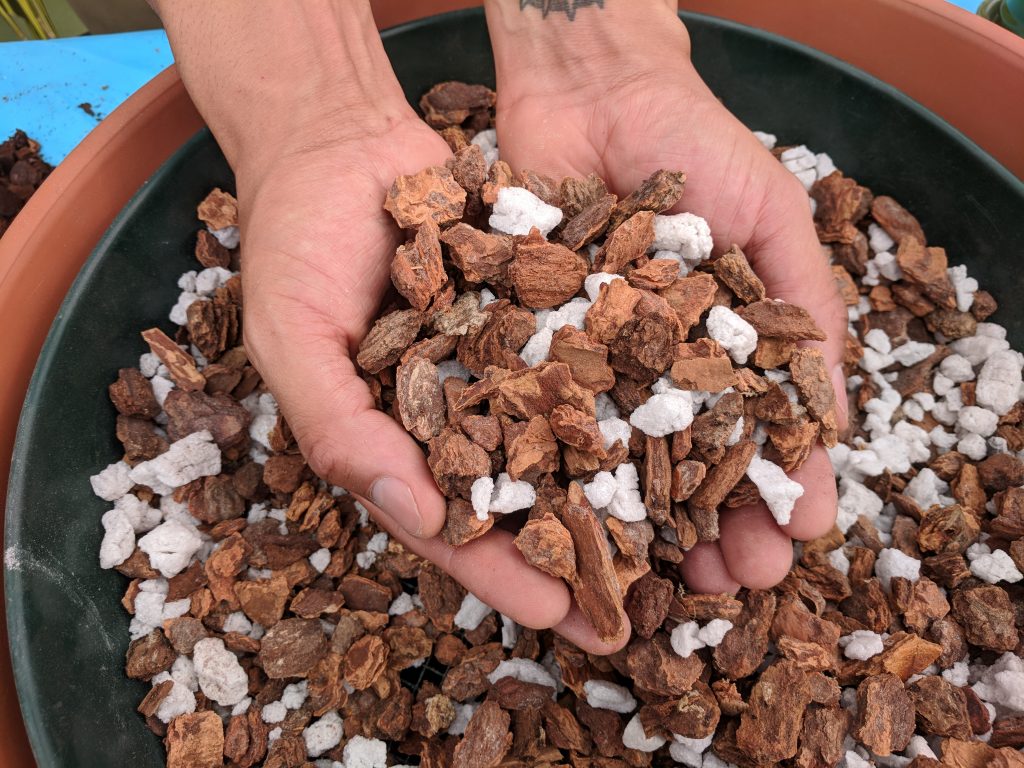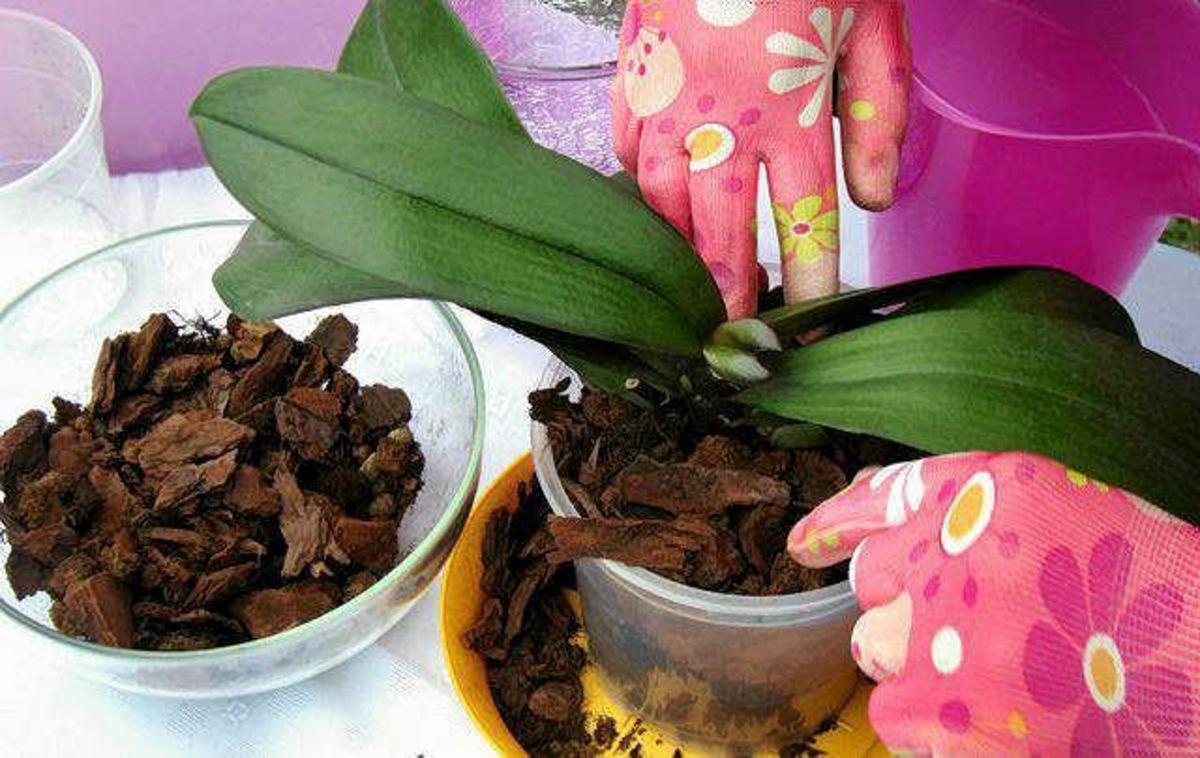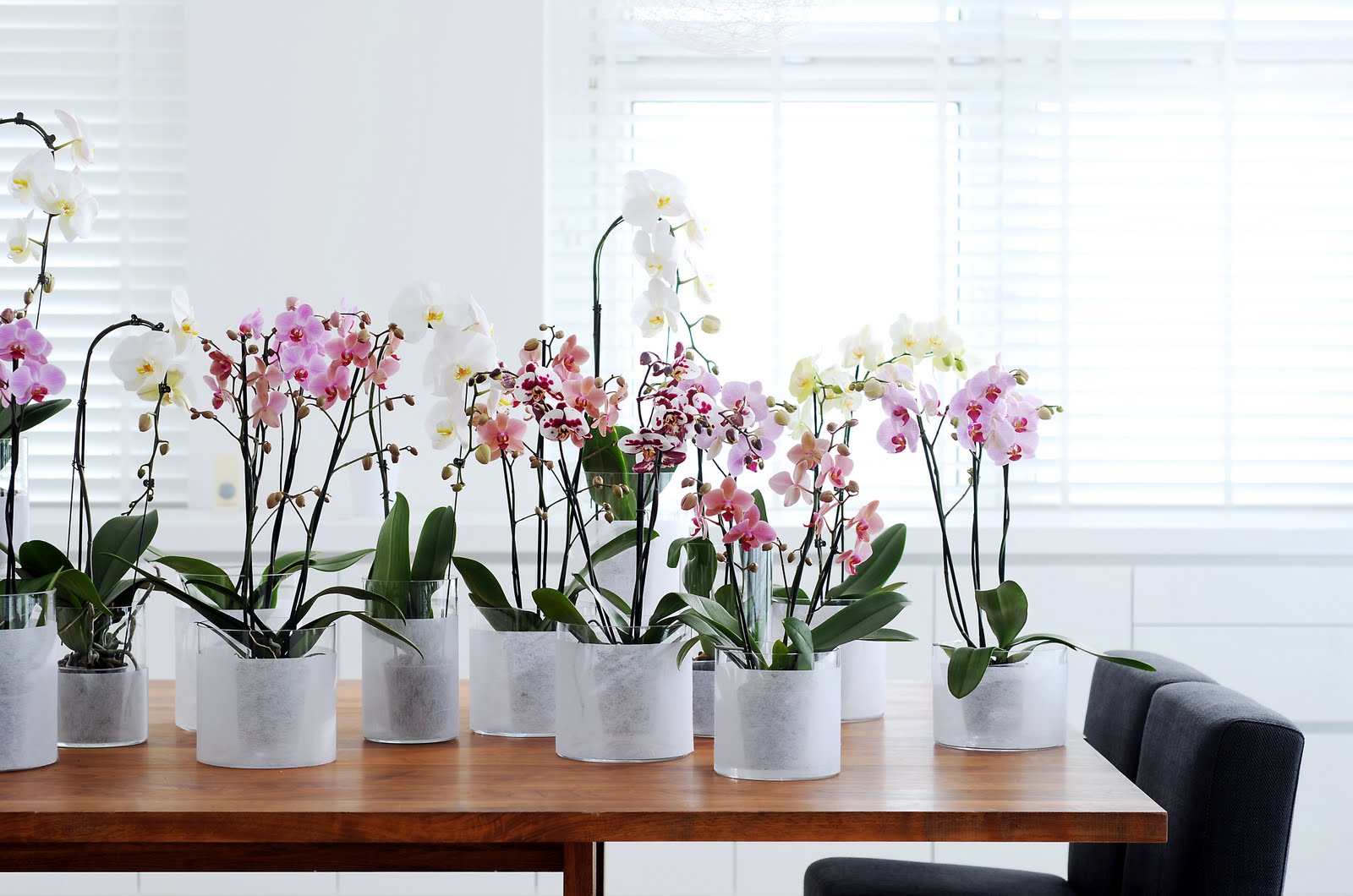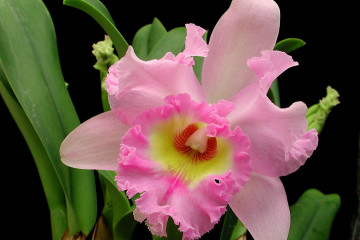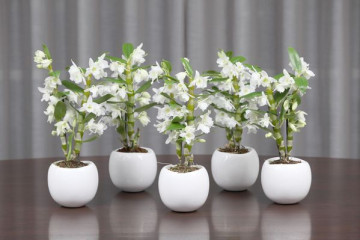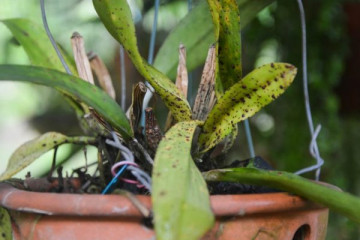Soil for orchids: soil requirements and options at home
Content:
Those who are first faced with growing orchids at home cannot understand how they grow without soil, often making the mistake of purchasing ordinary soil mixture for planting. But the root system of a flower must have free access to air, otherwise it will quickly die. As a result, before you buy this queen of the tropics, you should study in detail her "taste preferences" and determine what kind of soil is needed for an orchid.
Requirements for the composition of the soil
Many amateur flower growers are interested in whether ordinary land can be used to grow beautiful orchids. The soil for such plants is different from all other potting mixes that gardeners are used to. Epiphytes are not recommended to be planted in ordinary soil taken from a flower bed or from a vegetable garden. They will need to create a substrate that is perfect for their unusual growing method. The main components of the soil mixture for an orchid are described below, as well as their preparation before planting a plant in a pot.
You can purchase the individual soil components from the store or collect it yourself. In fact, it is not difficult to assemble the substrate with your own hands, the main thing is the desire and observance of elementary rules.
Bark
Orchids are planted in a substrate that includes the bark of any tree or even shrub. However, most tree species have a relatively thin and hard shell, which is not very suitable for an orchid. For phalaenopsis soil, it is best to use a porous but thick bark. It is this one that can well absorb and retain more air and moisture, which are needed for breathing and nourishing the roots of the orchid, and improving its color.
The places where you can collect bark for an orchid are absolutely accessible to everyone. This is a pine forest, park or square where these trees are planted. If there is a sawmill nearby, bark can be taken there.
When harvesting bark, be sure to cut the wood.
Coconut fiber
The coconut base is made from the shell and outer skin of a coconut. The substrate component works well for growing orchids for the following reasons:
- it is considered absolutely organic, without foreign harmful inclusions, which makes it also environmentally friendly;
- easy to use and relatively inexpensive;
- can be used as an independent basis, as well as as a component for the preparation of a substrate;
- coconut fibers are characterized by good moisture holding capacity and aeration - essential ingredients for orchid growth.
In its pure form, coconut flakes can be used, but it will be more justified for large orchids. Small flowers require a substrate of small fractions of coconut shells
Charcoal
Besides the pronounced drainage effect, charcoal will undoubtedly help balance the acidity of the soil for the orchid. But, like any other adsorbent, coal will accumulate a lot of salts after a while. After this, he will not bring anything useful to the plant. Therefore, it will need to be replaced with a new one from time to time.
It can be poured in a small amount and only in a substrate for those flowers that do not need constant fertilizing. If you add a lot of charcoal to an orchid pot, there is a risk of salt imbalance.
Minerals
These components are introduced into the substrate together with nutrient feeding, which makes it possible to compensate for the lack of nutrients in the main micro- and macroelements of the soil mixture. Minerals also prevent the accumulation of various salts in the soil, and also help maintain a certain acidity of the entire substrate. Orchid food includes nitrogen, potassium, phosphorus, boron and magnesium, iron and sulfur. In the minimum dosage, the orchid needs a top dressing that contains zinc, chlorine, silicium, sulfur, manganese and other minerals.
Additionally, you can use the following components for the substrate: fern roots, foam glass, sphagnum moss. Many growers add pieces of styrofoam, but it's best not to.
If you need to add fern roots, you can dig them up yourself. Only large parts of the root system should be used. It is worth remembering that the larger the ground part of the plant, the wider the root system, which is what is needed. It is recommended to rinse the roots well with warm water, dry, chop into pieces no longer than 2 cm.
Foam glass is a foamed base that has excellent moisture holding capacity. The unusual, spongy structure of the substrate makes it possible to accumulate water in the micropores of the soil, and evaporate through the macropores. This allows oxygen to penetrate the root system of the plant, nourishing them thoroughly.
Soil composition options for orchids
Of course, you can buy ready-made soil mixtures for orchids in flower shops, but they can contain a lot of stones. Therefore, in order to preserve the plant, it is best to make a substrate for the orchid with your own hands. Phalaenopsis develop quite well in the soil from the components in the following ratio:
- two pieces of gravel and pine bark;
- one part of charcoal and expanded clay.
You can also use this soil for orchids:
- three parts of oak or pine bark;
- one part of expanded clay, fern roots and charcoal.
The composition of the soil for orchids with your own hands can be selected independently. The most important thing is that all components are processed and well dried. This will remove all pathogenic fungi.
Requirements for preparing soil at home
To make a substrate for orchids with your own hands, you must carefully prepare each component. The bark of trees, sphagnum moss and fern roots require maximum attention. Niche step-by-step plan for preparing substrate components.
- Collect bark from dried trees and boil it for half an hour. After that, dry it well.
- Then pour boiling water over the moss for 2-3 hours and remove dead insects from it. After that, dry the moss well.
- It is best to dig up the fern roots in the forest.Be sure to rinse, grind and dry them in the shade.
- All the constituents of the soil for an orchid at home are stored in a ventilated container and mixed together just before use.
- After that, the soil for the orchids is filled with hot water for a couple of hours.
If the soil for the orchid has a non-standard mushroom smell, it is prohibited to use it without disinfection, since pathogenic microorganisms are already actively growing in it. Contaminated soil must be poured with boiling water for 2-3 hours or boiled (for 1-1.5 hours). After that, it must be treated with a special antifungal agent.
Air humidity
For good growth and flowering, almost all orchid varieties need to maintain optimal moisture levels at the proper level:
- for phalaenopsis 60-80%;
- for the epidendrum 50-75%;
- for cattleya 60-70%;
- for bulbofillum 40-50%.
Signs that the plant is not doing well due to extremely dry air:
- the edges of the sheets turn yellow and dry;
- buds fall off, slightly blossoming;
- long break between flowering phases;
- the elasticity of the leaves decreases;
- the plant is withering away.
Most of the orchid varieties and hybrids grown in home floriculture adapt very well to room conditions and feel fine with a humidity of 40 to 60%. The problem is that in winter, during the heating season, this figure may drop below 20%. There are several ways to increase humidity in a room:
- buy a humidifier or steam generator;
- grow an orchid in a florarium;
- place an aquarium or a small decorative fountain next to the flower;
- constantly irrigate the space near the flower with a spray bottle;
- put wet, clean towels on batteries;
- install the flowerpot in a pallet with wet filler (moss, expanded clay, pebbles).
The soil
When determining what kind of land is needed for orchids, it is worth remembering that the substrate must be such that the roots of the plant can develop normally and properly anchor in the pot. Traditionally, the composition of the soil for orchids contains a certain amount of ingredients, not only natural, but also of artificial origin. They are selected and mixed so that rotting of the root system is not allowed, the flow of air and light is not limited. The acidity of the soil for an indoor flower should be medium, pH5.5-6.5.
Orchiat, which consists of the bark of New Zealand pine, is considered one of the best commercially available compositions. Many flower growers advise to plant young plants in such a composition, which can quickly become roots for the elements of the substrate. Orchiat retains all beneficial nutrients and microorganisms in its composition.
Choosing an orchid pot
An orchid pot is not just a means to highlight the beauty of an indoor flower. A well-chosen pot should be small in size and with side holes. The inside of the flowerpot should be smooth.
Clay
In stores, you can find a wide variety of clay orchid pots with lots of holes on the sides.
The roughness of the clay inside the pot can lead to ingrowth of roots into the walls of the flowerpot and to the rapid drying out of the soil mixture and roots.To avoid this, you need to select glazed clay pots, their surface is slightly smooth.
Clay allows you to maintain the desired temperature for a long time. Before planting an orchid in such a pot, it is worth lowering it in water for a couple of hours. This will enable the pot to be saturated with water, which it will then give to the roots of the flower. If you want to disinfect a clay pot, then it is necessary to put it in the oven for 2 hours at a temperature of 200 ° C before soaking.
Plastic
Literally all orchids, except for terrestrial species, are sold in stores in clear plastic shipping pots. The advantages of such flowerpots:
- plastic pots are considered inexpensive and convenient. Through the transparent walls, it is easy to understand whether it is necessary to water the flower;
- the roots of orchids almost do not adhere to the plastic, and if necessary, the orchid can be easily pulled out of the pot for transplanting into another flowerpot or for the purpose of dividing;
- thirdly, the roots of many orchids photosynthesize to the same extent as the leaves, and they need access to sunlight for their normal formation.
If you bought a blooming orchid in a standard transparent plastic pot, do not rush to replant it. In such containers, the flower can grow successfully and bloom well for a long time. If, nevertheless, it is decided to transplant the plant, it is not recommended to take too large a flowerpot, where there is a lot of free space. Otherwise, the orchid will spend energy not on flowering, but so that the root system sooner fills the voids of the flowerpot and is firmly fixed in it.
Well, what kind of soil to choose for planting is described above. It is worth listening to the advice so that the acquired exotic flower does not die after transplantation.


